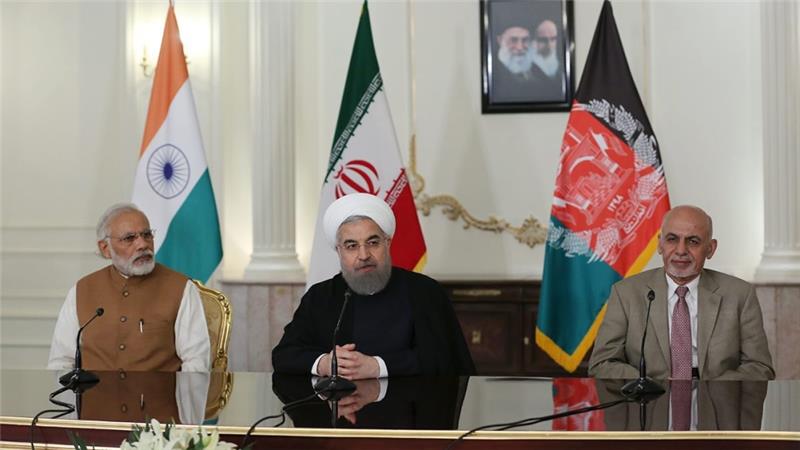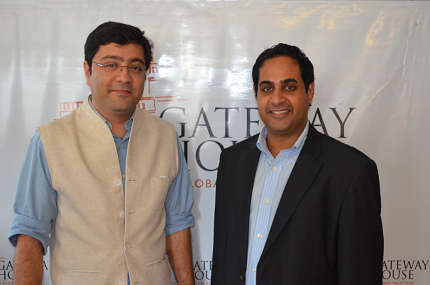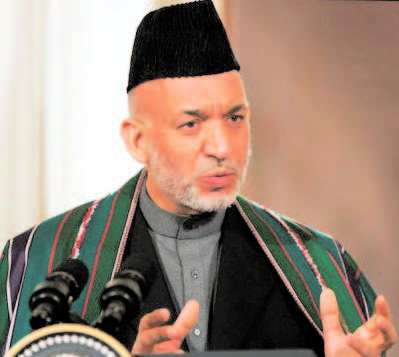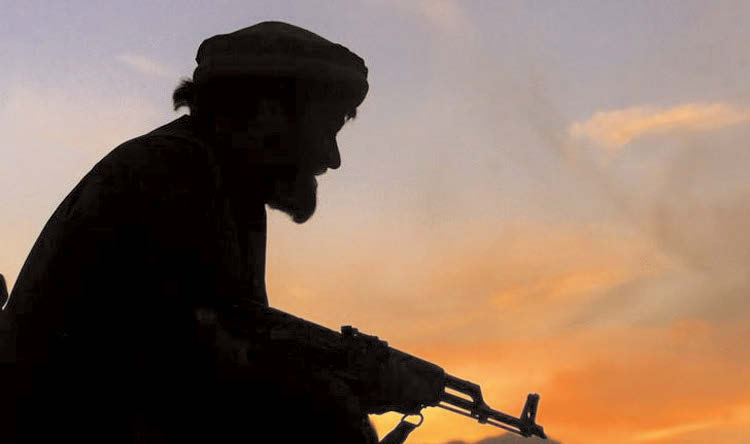
India, Iran and Afghanistan have signed a tripartite agreement to turn the Iranian port of Chabahar into a transit hub bypassing Pakistan, which has been the only route for war-stricken Afghanistan to the Indian Ocean.
“The agreement can change the course of history in this region,” Indian Prime Minister Narendra Modi said on Monday, May 23, during his visit to Tehran.
The accord, which calls for joint investments, will significantly boost the role of the under-tapped port of Chabahar. Once the project is realised, it will connect India to Afghanistan and central Asia, while Kabul will get an alternate route to the Indian Ocean.
India has agreed to finance the development of the port as a regional hub, as Modi sought to revive economic ties with Tehran after the lifting of sanctions.
Modi also met Iranian officials including supreme leader Ayatollah Ali Khamenei and President Hassan Rouhani which was termed by him as “a new chapter in our strategic partnership”.
Modi and Rouhani oversaw the signing of a memorandum of understanding for the provision of a $500m line of credit.
“Today is an important and historical day of development of relations between the three countries,” Rouhani said in a televised speech, seated between the two other leaders.
“From Tehran, New Delhi and Kabul, this is a crucial message … that the path to progress for regional countries goes through joint cooperation and utilising regional opportunities.”
The deal is crucial for the landlocked Afghanistan, as it changes the geopolitics of the region and is seen as a way out of its dependency on Pakistan.
Alternate route will leave China & Pakistan red faced
The tripartite deal is likely to upset China, the greatest economic rival of India in Asia, and Pakistan, which has been the only transit route for Afghanistan to the Indian Ocean.
Chabahar is not very far from the Pakistan port city of Gwadar, which is being developed by China.
The volume of trade between Iran and India in the past 11 months reached $9bn, according to Iran’s official IRNA news agency.
Tehran was New Delhi’s second largest oil supplier until 2011-12, when the sanctions cut its dependence on Iranian oil.
Advantage India | If Chabahar is realized it would be the kind of alternate route that would really not cause much comfort and happiness for China and Pakistanand will give India access to Afghanistan and central Asia.
1) Where is Chabahar?
The port of Chabahar is located in southeastern Iran in the Gulf of Oman. It is the only Iranian port with direct access to the ocean.
2) What does the pact entail and what are India’s plans for Chabahar?
- India will develop and operate the Chabahar port. India Ports Global, a recently formed port project investment arm of the shipping ministry and a joint venture between the Jawaharlal Nehru Port Trust and the Kandla port, will invest $85 million in developing two container berths with a length of 640 metres and three multi-cargo berths.
- The contract is for 10 years and extendable. It will take 18 months to complete phase one of the port construction. The first two years of the contract are grace period which means India doesn’t have to guarantee any cargo for the port.
- From the third year, India will facilitate 30,000 TEUs (Twenty Foot Equivalent) of cargo at the port. The quantum will rise to 2,50,000 TEUs by the 10th year.
3) Is that all?
No. State run railway body IRCON International will set up a railway line at Chabahar to move goods right up to Afghanistan. The 500-km rail link between Chabahar and Zahedan will link Delhi to the rest of Iran’s railway network.
Also, part of the agreement is a free trade zone where a total investment of ₹1 lakh crore is envisaged. Indian companies would set up a range of industries from aluminium smelter to urea plants in the region. State-owned NALCO will set up an aluminium smelter while private and co-operative fertiliser firms are keen to build urea plants.
India will also supply $400 million of steel rails to Tehran. There are plans of a fertilizer plant through a joint venture with the Iran government. Securing hydrocarbon sources is a priority for India as Delhi and Tehran would look to expand the basket in the coming years.
4) Why is it so important for India?
No other international port has seen the level of involvement and enthusiasm from Chabahar as India. The port will make way for India to bypass Pakistan in transporting goods to Afghanistan using a sea-land route. At present, Pakistan does not allow India to transport through its territory to Afghanistan. It has, however, recently allowed some Afghan shipments to come to India.
This will also give momentum to the International North-South Transport Corridor of which both are initial signatories along with Russia. Iran is the key gateway in this project. It entails the ship, rail, and road routes for moving freight between India, Russia, Iran, Europe and Central Asia. The route primarily involves moving freight from India, Iran, Azerbaijan and Russia. The objective of the corridor is to increase trade connectivity between major cities such as Mumbai, Moscow, Tehran, Baku, Astrakhan etc.
It would counter Chinese presence in the Arabian sea through the support to Pakistan in developing Gwadar port. It can be used to station security vessels for merchant ships off the African coast apart from giving the country a foothold in the western Arabian Sea, which is important as many of its energy imports pass through the route.
5) India has been making efforts to finalise this deal. What took it so long and what is the history?
The port was partially built by India in the 1990s. An initial pact to build the Chabahar port was first inked during the Atal Bihari Vajpayee’s government in 2003, but the deal slipped through during subsequent years.
Negotiations only intensified after nuclear deal between P5 + 1 (the UN Security Council’s five permanent members — China, France, Russia, UK and US — plus Germany) and Iran last year. But reaching the deal was far from smooth and differences cropped up over ownership as Tehran’s Port Authority introduced role of private player in the process. After several rounds of negotiations between India’s consortium ofJNPT, Kandla Port Authority and Iranian authorities, the contract was deemed ready for signing.





Be the first to comment